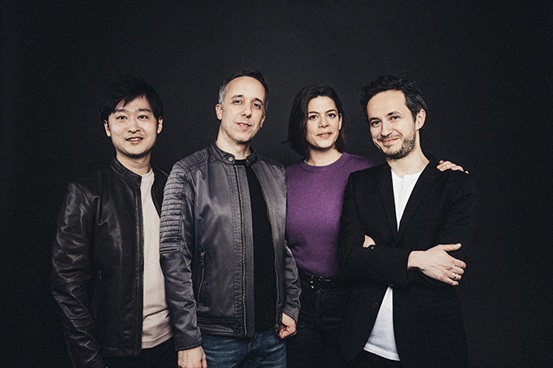
Quatuor Èbene © Julien Mignot
Quatuor Ébène
Sunday
5
October
2025
19:30
Mozart-Saal
Tickets for members from 1 August, for the general public from 8 August, 2025
Request reminder
Event reminders and online booking on our website are easy and secure. Please log in here or register as a new customer.
Please log in or register!
Performers
Quatuor Ébène
Pierre Colombet, Violine
Gabriel Le Magadure, Violine
Marie Chilemme, Viola
Yuya Okamoto, Violoncello
Programme
Wolfgang Amadeus Mozart
Streichquartett d-moll K 417b (1783)
Claude Debussy
Streichquartett g-moll op. 10 (1893)
***
Johannes Brahms
Streichquartett Nr. 2 a-moll op. 51/2 (1873)
Subscription series
Belcea & Ébène
Links
https://www.quatuorebene.com
Presented by
Wiener Konzerthausgesellschaft
Labour pains, forceps delivery and baptism
When Mozart composed his string quartet in D minor, his wife was in labour for the first time. »As often as she expressed suffering, he ran to her to comfort and cheer her up; and when she was a little calmer, he went back to his paper«, Constanze's second husband Nikolaus von Nissen later wrote. This quartet, which stands out due to its minor key, was dedicated to »the dear friend« Joseph Haydn along with five other works in a cycle. It was Haydn who really launched the string quartet genre with his Opus 33.
Brahms, the progressive
In contrast, Johannes Brahms described his String Quartet No. 2 in A minor as a »forceps birth«, for which a surgeon served as obstetrician: Theodor Billroth, a doctor friend and chamber music enthusiast, was the dedicatee. Arnold Schönberg later used this quartet to praise Brahms' progressiveness, his technique of forming a large whole from small motifs and their variations. At the same time, he placed himself in his tradition.
Colourful timbres
In the middle of the Quatuor Ébène concert, we hear Claude Debussy's only string quartet. It was modelled on César Franck's string quartet, which had been composed shortly before. The work, which is classically divided into four movements, has a variety of different tonal influences, ranging from church music to Balkan music and Javanese gamelan music to the music of the Russian school. Paul Dukas saw the string quartet as an »artfully patterned carpet of wondrous colours«.